Blogs
Beyond the Build-Essential Digital Marketing Strategies to Drive Traffic to Your New Website.
Mental Availability: The Most Underused Growth Lever in B2B
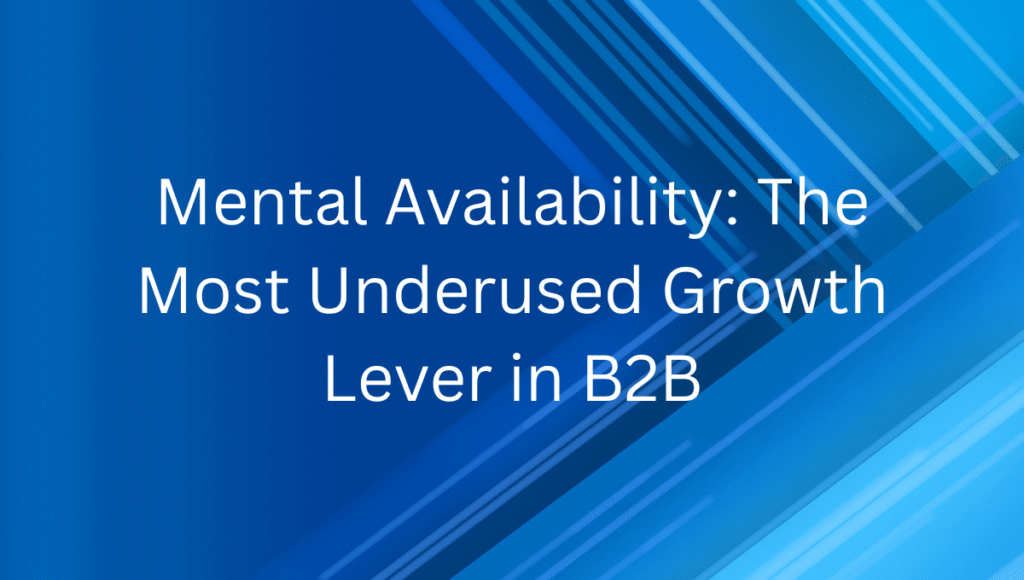
Categories
Acquisition
B2B Marketing
Brand Building
Business Building
Copywriting
CRO & Testing
Customer Stories
Digital Analytics
Growth Experimentation
Marketing Case Studies
Marketing Education
Marketing Tactics
Original Research
Psychology
Social Media
User Experience & Persuasive
Design
Most B2B marketing is forgettable, and it’s costing you millions.
Marketers obsess over ICPs, funnels, and optimization hacks, only to keep copying the same generic, templated campaigns from last quarter.
Researchers call it the “Dullness Pandemic.” Your board calls it wasted budget.
B2B growth doesn’t just come from performance clicks or last-touch attribution models. It comes from being remembered when it counts. And that means getting serious about mental availability, the most underused, underfunded growth lever in B2B marketing.
Table of contents
- Brand isn’t a vibe. It’s a growth multiplier.
- How top-of-mind and findability fuel growth
- Mental availability: Be the first name they recall
- Physical availability: Be easy to find when they’re ready
- Emotion is a better funnel
- Building brand assets that stick
- Maximize your share of voice
- Channel Checklist
- Test and learn: Simple A/b tests, big recall
- What to test
- How to test it
- Key metrics
- Measure, adapt, repeat
- Quantitative:
- Qualitative:
- Your quick-start playbook
- 1. Run category research
- 2. Build a brand asset checklist
- 3. Run an availability audit
- 4. Balance the budget
- 5. Create a campaign roadmap
- Be remembered or be replaced
- Want the full framework?
Brand isn’t a vibe. It’s a growth multiplier.
You don’t have to pick between brand and performance. Smart marketers use brand to make performance cheaper and more effective.
Mental availability (being easily remembered) and physical availability (being easy to find) work together. One without the other? You’re just background noise in the feed—optimized noise, maybe, but noise nonetheless.
How top-of-mind and findability fuel growth
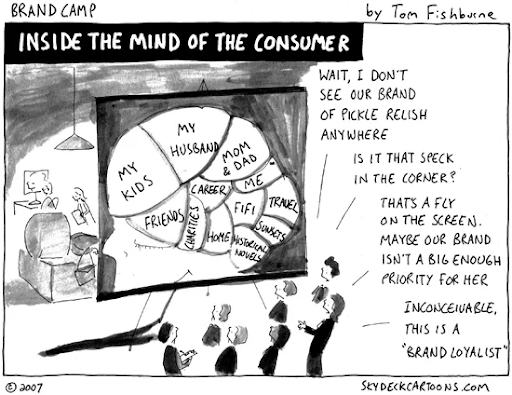
“Playing it safe makes you invisible. Emotion drives action.”
Daniel Kahneman didn’t write Thinking, Fast and Slow, so we could keep approving neutral whitepapers and beige websites. Even complex buying decisions are driven by heuristics and gut feel, especially when every vendor sounds the same.
Mental availability: Be the first name they recall
What it is:
How quickly your brand shows up in someone’s head when they’re about to buy. If they can’t recall you, they won’t consider you.
Why it matters:
Brands that come to mind first get shortlisted. Emotion leads; logic follows.
Example:
Trackdesk’s Deer started as a homepage detail. Now, it’s a distinct mascot that shows up in emails, booths, and swag. Reps say it helps buyers recognize them instantly. Mission accomplished.
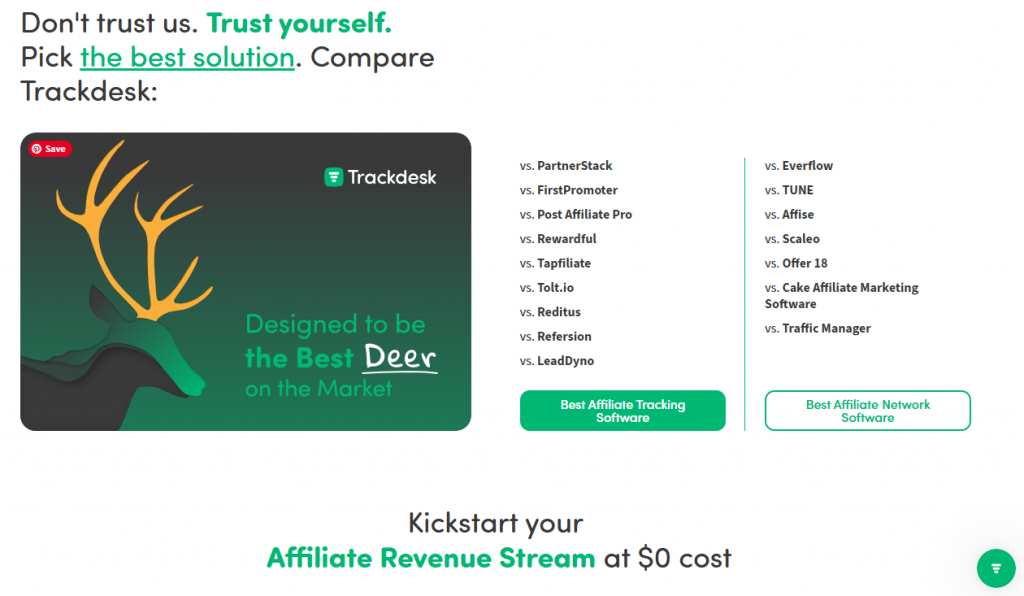
Physical availability: Be easy to find when they’re ready
What it is:
The brand’s visibility across discovery channels. Not “everywhere,” just in the right places at the right time.
Why it matters:
Buyers now discover brands through AI-generated answers review sites, app stores, and social feeds: all are modern shelf space. If you’re not visible, you won’t even be considered.
Emotion is a better funnel
Let’s clear the rational-fallacy fog: B2B buyers don’t buy on logic alone. They use logic to justify choices, but emotion gets them there.
If buyers like your brand, they’re more likely to believe your message, read your content, and respond to your CTA.
Emotional brands:
- Earn attention;
- Make a lasting impression;
- Convert better.
Example:
Billdu’s mascot—an odd little guy with charm—turns an invoicing tool into something engaging. It adds human texture in a sea of SaaS sameness.
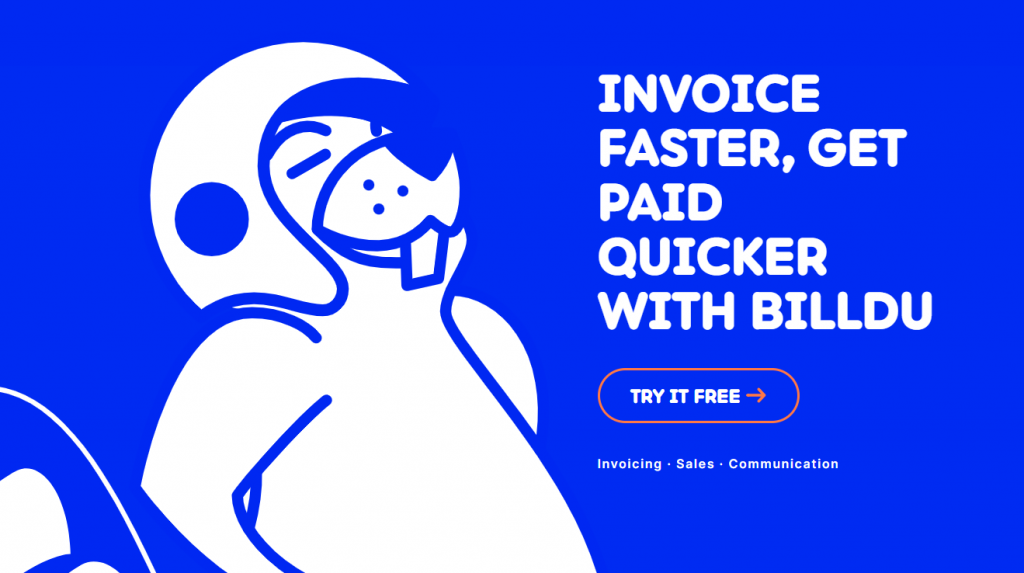
Safe = invisible
Most B2B campaigns die in the valley of neutrality, not necessarily because they were bad. But because they tried to please everyone and ended up resonating with no one.
Let’s break down some effective approaches:
| Approach | Example | Why It Works |
| Feature-Led | “Automated reminders & late fees” | Accurate, but forgettable |
| Emotional | “Never chase an invoice again” | Triggers relief, control |
| Fluent Device | Billdu’s mascot | Sticky, playful recall |
“That whitepaper? The one with 37 stats and no point of view? It’s why buyers stopped reading whitepapers.”
Building brand assets that stick
A brand asset is anything that makes people think of you; we’re talking visual, audio, even a recurring narrative.
A fluent device is a consistent brand cue, i.e. your brand’s memory shortcut. This can be a mascot, sound, symbol, or pattern, anything that trains the brain to remember.
Example:
HubHub’s visual system (bold patterns and fonts) shows up in decks, social, and sales collateral. You know it’s them before you even see the name.
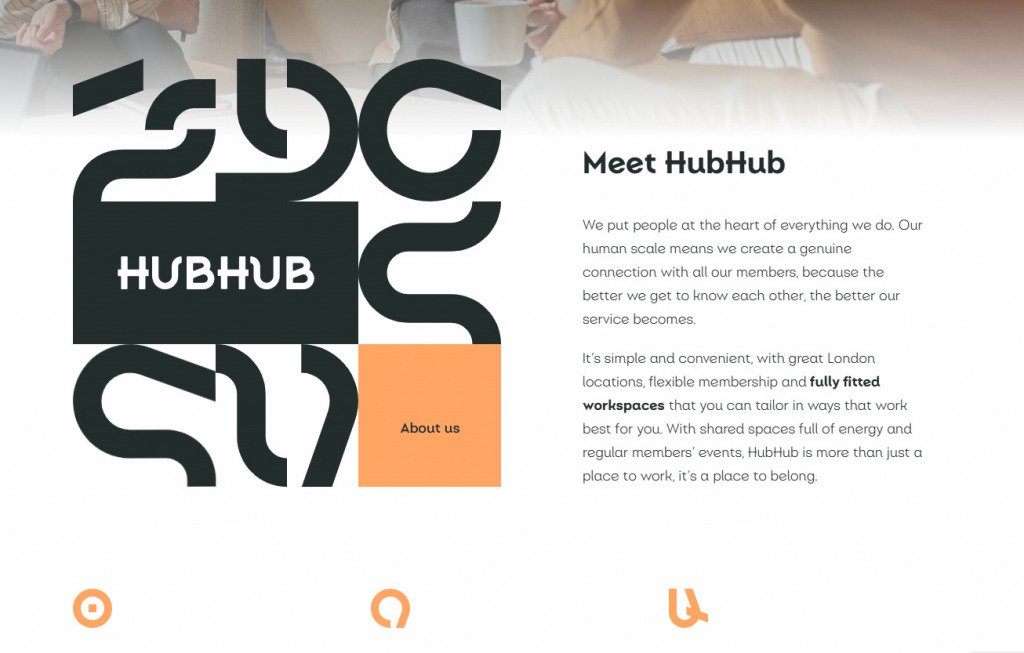
Why it matters:
Fluent devices encode your brand into memory. Use them consistently and you get free recall. Use them sporadically and you’re paying to start from zero every time.
Related: From Brand Strategy to Brand Fame
Maximize your share of voice
You don’t need to outspend the competition. You need to be more memorable than them.
That starts with Excess Share of Voice (ESOV). When your share of attention exceeds your market share, you grow. When it doesn’t, your shares diminish.
Channel Checklist
Before you pick a tactic, zoom out. Every channel has its own psychology, its own set of rules for attention, trust, and conversion.
Here’s how to win across discovery channels:
- Search
Buyers now discover brands via AI agents like ChatGPT, DeepSeek, Perplexity, and others, not just Google. If you’re not in AI Overviews, you’re not in the running, at all.
- Own both paid and organic listings;
- Optimize for AI discovery, not just classic SEO.
Ask: Will I show up in a ChatGPT recommendation?
- Reviews
- Get into the top 3 on G2, Capterra, etc.
- Automate review asks, track mentions, and respond with value.
- Social and content hubs
- Paid = faster SOV. Organic alone is a grind;
- Stay visually and narratively consistent across formats.
- Outreach and events
- If five other vendors could’ve sent your cold email, start over.
- Use a bold image, hook, or fluent device to earn memory after the scroll.
Example:
One brand focused on “mental clarity” gave away biohacking kits at an event. Six months later, attendees still remembered, not because of the booth, but the hook.
Test and learn: Simple A/b tests, big recall
You don’t need a Super Bowl budget. Just a spreadsheet and a few strong hypotheses.
What to test
- Emotional vs. Feature-Led Messaging: Test both. Use emotion to pull, and features to close.
- Consistent Fluent Device vs. Visual Variability: Memory needs repetition. Novelty can backfire.
How to test it
- A/B ad creatives: Emotion-first vs. feature-first;
- Homepage variants: Mascot/pattern vs. no device;
- Email subject lines: Brand voice and hook vs. generic line.
Key metrics
- Ad recall;
- Engagement rate;
- Brand sentiment (yes, even sales team feedback counts);
- Conversions from brand-aware audiences.
Measure, adapt, repeat
Growth is a feedback loop, one-time push. To scale what works (and cut what doesn’t), you need to track and measure the right signals:
Quantitative:
- Impressions, clicks, conversions;
- Share of voice across search, social, and reviews.
Qualitative:
- Brand-lift surveys (or proxies: sales feedback, open-text NPS);
- Memory salience in follow-up surveys or onboarding interviews,
Refine your brand assets and adjust the media mix. Make recall a KPI, not a nice-to-have.
Your quick-start playbook
Chasing “what works” often lands you in a graveyard of lookalike brands. Best practices should be a starting point, not a blueprint. Question them, challenge them, and reshape them to fit your brand. Otherwise, you risk blending into a blur of copycat competitors.
Here are five steps to get you started:
1. Run category research
You don’t need to stand out globally, just in your space.
Find out who buyers are comparing you to. Then, map out your Category Entry Points, in other words, what buyers think when they enter your market category.
2. Build a brand asset checklist
- Define your fluent device(s);
- Create a 1-pager with visual + narrative rules;
- Audit every channel monthly for consistency.
3. Run an availability audit
- Mental: Are you the brand buyers think of first?
- Physical: Do you show up where buying happens?
Check if your brand appears in spaces like ChatGPT, Perplexity, G2, and LinkedIn feeds.
4. Balance the budget
- Split ~50/50 between short-term activation (search, outreach) and long-term brand building (emotional campaigns, brand assets).
Even for early-stage teams, this ratio beats pouring everything into performance only to be forgotten later.
5. Create a campaign roadmap
- Link every testable asset to a live calendar;
- Feed what you learn into new creative;
- Continuously build memory while driving motion.
Related: The Serial Position Effect: Why Primacy and Order Matter
Be remembered or be replaced
Forgettable brands don’t get RFPs. They don’t win deals. They don’t get shared.
So yes, write the nurture sequences. Launch the performance ads. But if you want lasting growth? Be the default choice.
Want the full framework?
Grab the full Positioning & Brand Distinctiveness Guide: Templates, brand asset rules, test plans, and a roadmap for building buyer recognition from day one.
Want more plays like this? Subscribe to the CXL Growth Newsletter for weekly advanced B2B playbooks.
Level up with B2B Marketing & Growth Mini-Degree: 40 hours of expert-led B2B training to sharpen your edge and accelerate your career.
